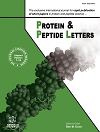- Home
- A-Z Publications
- Protein and Peptide Letters
- Previous Issues
- Volume 30, Issue 8, 2023
Protein and Peptide Letters - Volume 30, Issue 8, 2023
Volume 30, Issue 8, 2023
-
-
A Review of the Physiological Role of Hypocretin in the Ventral Tegmental Area in Reward and Drug Dependence
More LessAuthors: Masoumeh Kourosh-Arami, Alireza Komaki and Masoumeh GholamiOrexin (OX, hypocretin: HCRT) as a neuropeptide is produced in a distinct population of neurons in the posterior lateral hypothalamus (LH). OX neurons implicate in reward function. OX makes a main input from the hypothalamus to the ventral tegmental area (VTA) of the midbrain. OX, through OX receptors (OXR1, OXR2) activates VTA dopamine (DA) neurons. VTA neurons are involved in reward processing and motivati Read More
-
-
-
Recent Advances in Bioactive Peptides as Functional Food for Health Promotions and Medicinal Applications
More LessBioactive peptides obtained from natural resources are useful due to their ability to prevent the risk of dreadful conditions such as hypertension, cancers, obesity and cardiovascular diseases. Proteins from food, plants, animals and dairy products are chemically or enzymatically hydrolyzed or fermented in the presence of microbes to produce bioactive peptides. Bioactive peptides are antioxidant, antihypertensive, anti-inflamm Read More
-
-
-
A Comprehensive Review on Inorganic Nanoparticles as Effective Modulators of Amyloidogenesis
More LessAuthors: Debashmita Chakraborty, Aniket Mukherjee and Nandini SarkarMany degenerative disorders have started to develop as a result of the deposition of insoluble protein fibrillar clumps known as amyloid. This deposition mostly limits normal cellular function and signaling. This build-up of amyloid in vivo results in a variety of illnesses in the body, including type 2 diabetes, several neurodegenerative diseases (such as Alzheimer's disease and spongiform encephalopathy), and Alzheimer's dis Read More
-
-
-
Applications of CRISPR Cas-9 in Ovarian Cancer Research
More LessOvarian cancer is a highly prevalent malignancy among women and affects a significant population worldwide. Different forms of hormonal treatments or chemotherapies are used to treat ovarian cancer, but the possible side effects, including menopausal symptoms, can be severe, forcing some patients to prematurely stop the treatment. The emerging genome editing technology, known as clustered regularly inters Read More
-
-
-
Analysis of the Interaction of UBE2Q1 with B4GALT1 and P53: Experimental and Molecular Modeling Study
More LessBackground: UBE2Q1-dependent ubiquitination of key proteins including β 1,4- galactosyltransferase (GalT1), and P53 might play a pivotal role in cancer development. Objective: The present study aimed to evaluate the molecular analysis of possible interactions between UBE2Q1 with B4GALT1 and P53 proteins. Methods: We established SW1116 colorectal cancer cell line stably transfected with UBE2Q1. To verify the ov Read More
-
-
-
β Pore-forming Protein-based Evolutionary Divergence of Gnathostomata from Agnatha
More LessIntroduction: The first vertebrates were jawless fish, or Agnatha, whose evolution diverged into jawed fish, or Gnathostomes, around 550 million years ago. Methods: In this study, we investigated β PFT proteins' evolutionary divergence of lamprey immune protein from Agnatha, reportedly possessing anti-cancer activity, into Dln1 protein from Gnathostomes. Both proteins showed structural and functional divergence, and sh Read More
-
-
-
Effects of Conjugation of Ferrocene and Gallic Acid On desCys11/Lys12/Lys13-(p-BthTX-I)2K Peptide: Structure, Permeabilization and Antibacterial Activity
More LessBackground: Antimicrobial resistance is an emerging global health challenge that has led researchers to study alternatives to conventional antibiotics. A promising alternative is antimicrobial peptides (AMPs), produced as the first line of defense by almost all living organisms. To improve its biological activity, the conjugation of AMPs is a promising approach. Objective: In this study, we evaluated the N-terminal conjugation Read More
-
-
-
SNHG3/miR-330-5p/HSD11B1 Alleviates Myocardial Ischemia-reperfusion Injury by Regulating the ERK/p38 Signaling Pathway
More LessAuthors: Xiaochuan Bai, Jie Zhang, Heyun Yang, Keqiang Linghu and Min XuBackground: Studies have found that microRNAs (miRNAs) participate in the pathogenesis of myocardial ischemia-reperfusion injury (MIRI). miR-330-5p alleviated cerebral IR injury and regulated myocardial damage. However, the mechanism of the effect of miR-330-5p on MIRI needs to be further studied. Objective: The study aimed to explore the role and mechanism of miR-330-5p in MIRI. Methods: The oxygen-glucose dep Read More
-
Volumes & issues
-
Volume 32 (2025)
-
Volume 31 (2024)
-
Volume 30 (2023)
-
Volume 29 (2022)
-
Volume 28 (2021)
-
Volume 27 (2020)
-
Volume 26 (2019)
-
Volume 25 (2018)
-
Volume 24 (2017)
-
Volume 23 (2016)
-
Volume 22 (2015)
-
Volume 21 (2014)
-
Volume 20 (2013)
-
Volume 19 (2012)
-
Volume 18 (2011)
-
Volume 17 (2010)
-
Volume 16 (2009)
-
Volume 15 (2008)
-
Volume 14 (2007)
-
Volume 13 (2006)
-
Volume 12 (2005)
-
Volume 11 (2004)
-
Volume 10 (2003)
-
Volume 9 (2002)
-
Volume 8 (2001)
Most Read This Month
Article
content/journals/ppl
Journal
10
5
false
en


